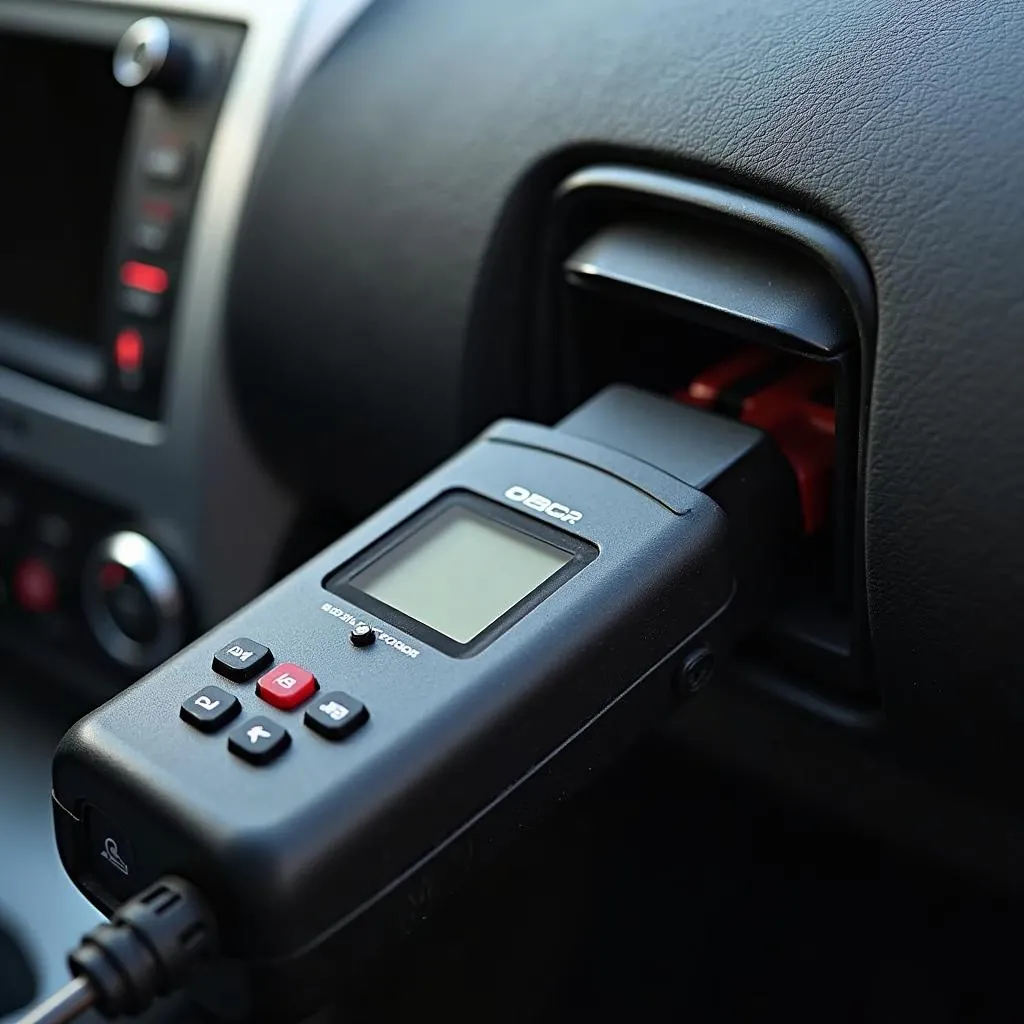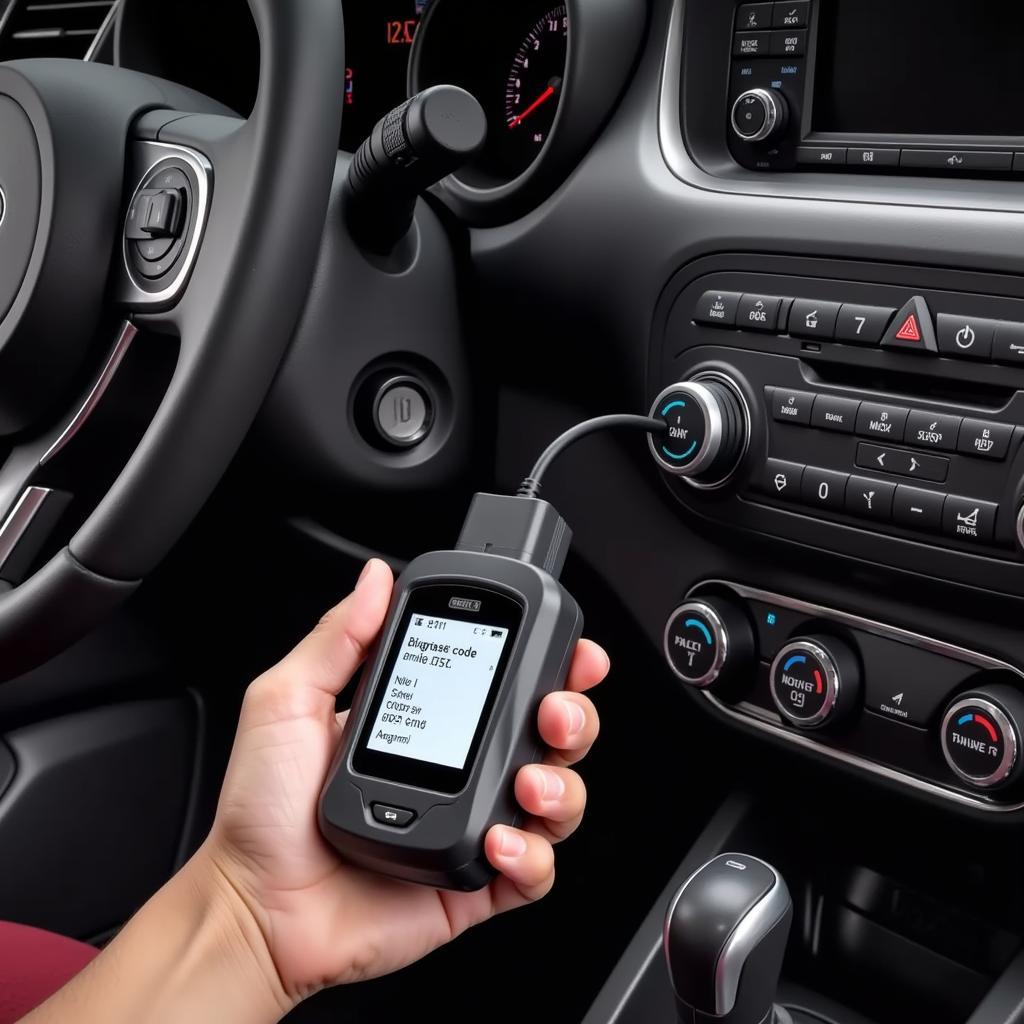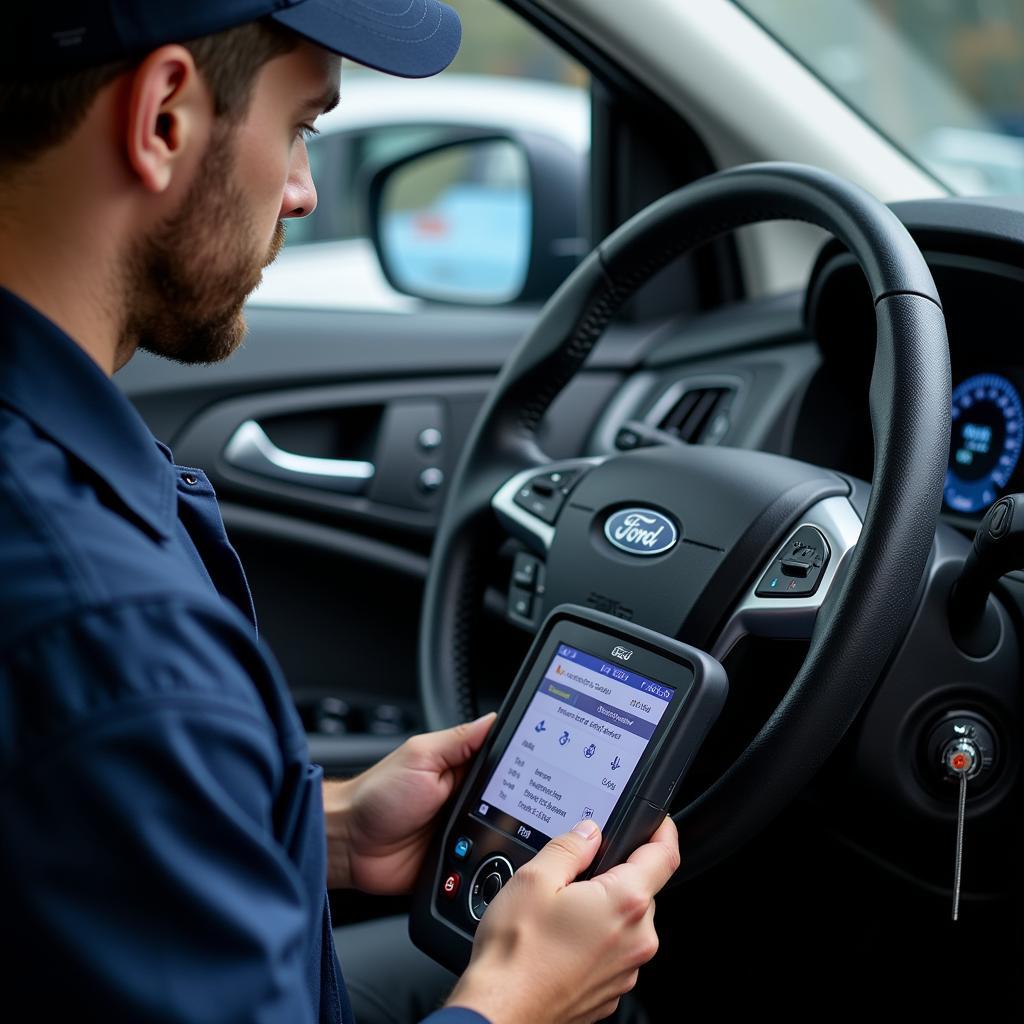Ever felt like your car was speaking a foreign language? That sputtering engine, the blinking check engine light – it’s all a cry for help, right? But what if you could understand those pleas? That’s where OBD2 scan tools and those cryptic codes they reveal come in.
Imagine this: You’re driving down the Pacific Coast Highway in your trusty 2018 Ford Mustang, the California sun warming your face. Suddenly, that dreaded check engine light illuminates your dashboard. Panic? Not necessarily. You whip out your handy OBD2 scan tool, plug it in, and bam! A code pops up – P0171. What does it mean? Fear not, understanding these codes can be your ticket to a smoother ride. Learn how to read OBD2 codes without scan tool: https://diagxcar.com/how-to-read-obd2-codes-without-scan-tool/.
Decoding the Mystery: What are OBD2 Scan Tool Codes?
OBD2, or On-Board Diagnostics, is like your car’s internal health system. Every car manufactured after 1996 has a standardized OBD2 port, usually located under the dashboard on the driver’s side. When your car experiences an issue, it logs a specific code in its computer system. An OBD2 scan tool acts as a translator, reading these codes and displaying them in a format you can understand. Think of it like deciphering a secret code to unlock your car’s inner workings.
These codes are not random; they follow a standardized format set by the Society of Automotive Engineers (SAE). A typical code, like P0171, consists of five characters:
- The first character: Indicates the system related to the issue. “P” stands for Powertrain, relating to the engine and transmission. Other letters like “B”, “C”, “U”, represent other systems.
- The second character: Specifies whether the code is generic (“0”) or manufacturer-specific (“1”).
- The third character: Identifies the specific system affected within the broader category, like fuel or air intake.
- The fourth and fifth characters: Pinpoint the exact fault within that system.
Why Should You Care About OBD2 Codes?
“Knowledge is power,” as they say, and understanding OBD2 codes empowers you as a car owner. Here’s why:
- Early Detection and Prevention: Catching issues early, like a slightly rich fuel mixture (P0172), can prevent more severe and costly problems down the road.
- Cost Savings: Diagnosing problems yourself using a scan tool can save you significant money on expensive mechanic visits.
- Informed Decisions: Armed with the knowledge of specific codes, you can research solutions, compare prices, and even tackle some repairs yourself.
For instance, imagine your scan tool reveals the code P0420, indicating a catalytic converter issue. “Replacing a catalytic converter can be quite expensive,” notes automotive expert Dr. Emily Carter in her book “The Car Whisperer.” Knowing this allows you to explore all options, from repairs to replacements, and make informed decisions about your car’s maintenance. You may also want to check out these performance tool canobd2 scan tool codes: https://diagxcar.com/performance-tool-canobd2-scan-tool-codes/ for further information.
 OBD2 scanner connected to a car's diagnostic port
OBD2 scanner connected to a car's diagnostic port
Common OBD2 Codes and What They Mean
While there are hundreds of potential OBD2 codes, here are a few common ones you might encounter:
- P0420: Catalytic Converter System Efficiency Below Threshold (Bank 1)
- P0171: System Too Lean (Bank 1)
- P0300: Random/Multiple Cylinder Misfire Detected
- P0135: O2 Sensor Heater Circuit Malfunction (Bank 1, Sensor 1)
- P0442: Evaporative Emission System Leak Detected (Small Leak)
Remember, these are just a few examples, and the specific meaning of a code can vary slightly depending on your car’s make and model. Always refer to your vehicle’s service manual or a reliable online database for accurate interpretations. For instance, you can explore specific codes like the “Centech OBD2 Scan Tool 94169 Mazda Codes”: https://diagxcar.com/centech-obd2-scan-tool-94169-mazda-codes/.
Beyond the Codes: What Else Can You Do?
While OBD2 codes are incredibly helpful, they are just the starting point.
- Further Diagnosis: A code often points to a general area of concern, not the exact problem. For example, P0300 (misfire) could be caused by faulty spark plugs, ignition coils, or even a vacuum leak. Further inspection and testing are usually required.
- Check Engine Light On, But No Codes? Sometimes, the check engine light might illuminate without any stored codes. This could indicate a problem with the OBD2 system itself or an issue that hasn’t yet triggered a code.
- Don’t Panic: Seeing a code doesn’t always mean your car is on the verge of a breakdown. Many issues are minor and can be easily fixed.
 Mechanic inspecting a car engine in a repair shop
Mechanic inspecting a car engine in a repair shop
Need Help? We’re Just a Message Away!
Understanding your car’s language can seem daunting, but it doesn’t have to be. If you’re unsure about interpreting codes, diagnosing problems, or need help with your diagnostics tools, don’t hesitate to reach out.
Contact us on WhatsApp at +84767531508. Our team of automotive experts is available 24/7 to provide guidance and support. You can also learn more about how car scan tools work with catalytic converters here: https://diagxcar.com/car-scan-tool-reads-cats/.
Remember, knowledge is power when it comes to car maintenance. By understanding OBD2 codes, you’re taking a proactive step towards keeping your car running smoothly for miles to come.


